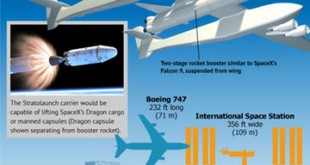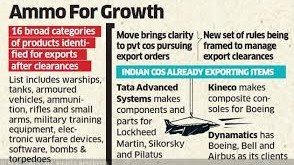In the vast and dynamic world of aviation, ensuring the safety, reliability, and efficiency of aircraft is paramount. This is where Aircraft Maintenance, Repair, and Overhaul (MRO) technology and services play a pivotal role. From routine maintenance checks to complex repairs and overhauls, the MRO industry is essential for keeping aircraft airborne and passengers safe.
The global aviation industry relies heavily on a complex ecosystem of maintenance, repair, and overhaul (MRO) activities to keep its fleet of aircraft airworthy and efficient. In recent years, technology has become a critical driver of change in this sector, transforming how MRO is performed and influencing the trajectory of the entire market. In this article, we unravel the latest technological innovations and market trends shaping the landscape of MRO, both in civil and military aviation sectors.
Aircraft maintenance in civil and military aviation
Aircraft maintenance is the performance of tasks required to ensure the continuing airworthiness of an aircraft or aircraft part, including overhaul, inspection, replacement, defect rectification, and the embodiment of modifications, compliance with airworthiness directives and repair.
Aircraft maintenance in civil aviation employs generally Scheduled maintenance checks or blocks which are packages of maintenance tasks that have to be done on an aircraft after a certain amount of time or usage. Packages are constructed by dividing the maintenance tasks into convenient, bite-size chunks to minimize the time the aircraft is out of service, to keep the maintenance workload level, and to maximize the use of maintenance facilities. At the completion of any maintenance task a person authorized by the national airworthiness authority signs a maintenance release stating that maintenance has been performed in accordance with the applicable airworthiness requirements.
Military aircrafts
A B-2A stealth bomber skidded off the runway at Whiteman Air Force Base in Missouri, resulting in over $10.1 million in damage. An Air Force investigation found that aged landing-gear springs, not replaced for at least a decade, were a significant factor in the incident. Despite a policy requiring replacement during major overhauls since 2018, the specific aircraft involved had not undergone such maintenance. Additionally, a failure in a hydraulic line coupling exacerbated the situation. The B-2A, one of the world’s most expensive aircraft, incurs substantial maintenance costs, with the Air Force spending approximately $18 million per aircraft annually. This incident underscores the critical importance of regular and timely maintenance practices to ensure the safety and reliability of military aircraft.
Evolution of MRO Technology:
Technological advancements have revolutionized the way aircraft maintenance is conducted, improving efficiency, accuracy, and safety. Here are some key technological innovations driving the evolution of MRO:
Predictive Maintenance: Utilizing data analytics, sensors, and predictive algorithms, airlines can anticipate maintenance needs before they become critical issues. Predictive maintenance minimizes downtime, reduces costs, and enhances aircraft reliability.
Remote Monitoring and Diagnostics: With the advent of IoT (Internet of Things) and connectivity solutions, aircraft systems can be remotely monitored in real-time. This enables MRO providers to diagnose problems promptly and proactively address maintenance issues, even while the aircraft is in flight.
Cloud-Based Maintenance Ecosystems: In July 2021, Google Cloud and the United States Air Force Rapid Sustainment Office (RSO) embarked on “Project Lighthouse,” an initiative to develop an open, agile, and globally scalable aircraft maintenance ecosystem. This collaboration aims to optimize maintenance readiness, enhance staff productivity, and reduce overall costs. With over 329,000 active duty personnel and 170 operating locations worldwide, the RSO seeks to implement innovative technology solutions to strengthen the Air Force. Project Lighthouse integrates successful RSO technologies to create a unified ecosystem, accelerating the adoption of Industry 4.0 technologies. Nathan Parker, Deputy Program Executive Officer at RSO, emphasized the significance of the partnership in addressing the Air Force’s sustainment challenges. The new ecosystem, supported by Google Cloud’s Apigee and Anthos platforms, will seamlessly integrate various technology providers, including predictive maintenance software and manufacturing robotics. Before its launch, the aircraft maintenance ecosystem will undergo prototyping, validation, and scalability testing within the Air Force’s technology environment.
Initiatives like the US Air Force’s Project Lighthouse, powered by Google Cloud technology, aim to optimize maintenance readiness, increase productivity, and reduce costs through open, agile, and globally scalable maintenance ecosystems.
Digital Twins and Remote Monitoring: Digital twins create virtual replicas of physical assets, enabling real-time monitoring and predictive analysis of aircraft systems. This technology facilitates early detection of potential faults and optimization of maintenance schedules.
Augmented Reality (AR) and Virtual Reality (VR): AR and VR technologies are revolutionizing MRO training, inspection, and repair processes. Technicians can access interactive digital manuals, overlay virtual diagrams onto physical components, and receive hands-on training in simulated environments, improving efficiency and proficiency.
3D Printing/Additive Manufacturing: Additive manufacturing techniques enable the production of complex aircraft components with greater precision and efficiency. MRO providers can quickly manufacture replacement parts on-demand, reducing lead times and inventory costs.
Automated Inspection Systems: Collaborative mobile robots like Air-Cobot and Unmanned Aerial Vehicles (UAVs) from Donecle and Easyjet are transforming aircraft inspection processes, making them safer, more efficient, and cost-effective.
Unmanned Aerial Vehicles (UAVs): Drones equipped with cameras and sensors are increasingly used for aircraft inspections, particularly in hard-to-reach areas such as wings and tail sections. UAVs enhance inspection accuracy, speed, and safety while reducing the need for scaffolding and manual labor.
Recent Developments
The 28th Maintenance Group Additive Manufacturing Flight at Ellsworth Air Force Base achieved a significant breakthrough in aircraft maintenance by conducting the first-ever restoration of an active flying aircraft using metal cold spray technology. This groundbreaking demonstration, conducted in May 2021, marked a significant advancement in on-aircraft structural repair capabilities, following a successful initial test in September 2019. The repair focused on an overwing faring slip joint critical for vertical movement within the wing contours of the B-1 aircraft, employing helium gas-accelerated particles to form a strong mechanical bond, thus providing an efficient and cost-effective alternative to traditional repair methods.
The adoption of cold spray technology offers unprecedented efficiency and cost savings, drastically reducing the time and resources required for component replacement. What would typically take weeks or months for ordering, shipping, and installing new components can now be accomplished in mere hours or days, saving the Air Force approximately $2 million annually. Collaborations with companies specializing in cold spray technology, such as VRC Metal Systems, have been instrumental in driving innovation and achieving historic feats in part restoration. This partnership underscores the transformative impact of collaboration and innovation in enhancing aircraft maintenance capabilities.
MRO Market
The global aircraft MRO market size was valued at USD 78.60 billion in 2022 and is expected to expand at a compound annual growth rate (CAGR) of 5.02% from 2023 to 2030. Rapid urbanization and the rising economic growth in emerging countries with increased business and tourism travels are expected to increase the market growth. Various external factors, such as air traffic volumes, global fleet size, and aircraft utilization, are the factors expected to significantly impact the market. Also, the increased air travel by individuals for business and personal purposes is expected to create more aircraft production, thereby substantially impacting the market.
The rise in investments in aircraft (maintenance, repair and overhaul) MRO software are also expected to create new business prospects. Aircraft MRO software consists of maintenance tracking, logbook tracking, flight time tracking, service bulletins management, maintenance scheduling, budget forecasting, electronic task card management, and work order management. For instance, in May 2021, India observed significant foreign direct investments in different sectors, including aircraft maintenance, repair, and overhaul industries. Therefore, investments and acquisitions are the factors expected to create lucrative opportunities for the market.
The market is also influenced by the regulatory compliance with organizations like the Federal Aviation Administration (FAA) and International Civil Aviation Organization (ICAO). Furthermore, the rise in demand for older planes and environmental concerns emphasize the continuous monitoring and maintenance of the older planes, thereby creating traction for the market. Furthermore, the global outburst of the COVID-19 and shutting down of travel and tourism due to strict lookdowns imposed by the governments to curb the spread hampered the revenue and profit margins of the airline industry.
The shutting down of the functioning of airlines resulted in more airlines turning to MRO to maintain fleet efficiency. Moreover, numerous government programs have been developed to encourage airports to embrace MRO as a strategic activity. Governments are currently pursuing a variety of holistic measures to ensure that enough space is available for the MRO at various airports around the country, which could boost aircraft MRO activities during the forecasted period.
Market Trends in MRO:
The global MRO market is experiencing significant shifts driven by technological advancements, regulatory changes, and evolving customer demands. Here are some prominent trends shaping the MRO landscape:
- Increasing Demand for MRO Services: The growing global fleet of commercial and military aircraft, coupled with aging aircraft populations, is driving robust demand for MRO services. Airlines and operators are increasingly outsourcing maintenance activities to specialized MRO providers to optimize costs and focus on core operations.
- Rise of Digital MRO Platforms: Digital MRO platforms are gaining traction, offering end-to-end solutions for maintenance planning, execution, and documentation. These platforms integrate data analytics, AI, and IoT technologies to streamline MRO processes, enhance decision-making, and improve operational efficiency.
- Shift towards Predictive and Proactive Maintenance: Airlines are shifting from traditional reactive maintenance practices to predictive and proactive maintenance strategies enabled by data-driven insights. By leveraging predictive analytics and condition-based monitoring, airlines can minimize unscheduled downtime, optimize maintenance schedules, and enhance fleet reliability.
- Focus on Sustainability and Environmental Compliance: With growing environmental concerns and regulatory pressures, MRO providers are increasingly adopting sustainable practices and eco-friendly technologies. This includes initiatives such as aircraft recycling, energy-efficient MRO facilities, and the use of alternative fuels and materials.
- Emergence of Blockchain in MRO: Blockchain technology holds promise for enhancing transparency, traceability, and security in MRO operations. By enabling immutable record-keeping and secure data sharing, blockchain platforms can streamline supply chain management, asset tracking, and maintenance documentation, reducing errors and fraud.
Challenges and Opportunities on the Horizon:
Amidst the promising advancements in the aircraft maintenance industry, several challenges loom on the horizon that demand attention and strategic solutions. Foremost among these is the escalating threat of cybersecurity breaches. With the growing reliance on digital technologies in MRO operations, safeguarding sensitive data and systems from cyberattacks becomes paramount to maintain operational integrity and protect critical information.
Additionally, the industry faces a shortage of skilled workforce equipped to handle the complexities of emerging technologies. Addressing this shortage mandates a concerted effort to revamp training programs and educational initiatives, ensuring that personnel are adept in leveraging advanced tools and methodologies effectively.
Moreover, navigating through intricate regulatory frameworks poses another obstacle to the seamless integration of new technologies. Compliance with regulations while adopting innovative solutions necessitates careful strategizing and proactive engagement with regulatory bodies to streamline processes and ensure adherence to standards. By proactively addressing these challenges, the aircraft maintenance industry can capitalize on the myriad opportunities presented by technological advancements, driving innovation and sustainable growth in the sector.
Aircraft maintenance AI
Aircraft maintenance AI stands as a pivotal innovation within artificial intelligence, leveraging machine learning and data analysis techniques to monitor and interpret sensor data across various aircraft operational phases. These sophisticated AI systems are adept at detecting anomalies and potential deviations in aircraft components’ behavior, facilitating proactive maintenance interventions and timely repairs to uphold aircraft safety and reliability standards.
GlobalData’s research delves into the forefront of aircraft maintenance AI innovation, identifying over 20 companies actively engaged in its development and application. These companies range from established aerospace and defense entities to emerging startups, each contributing to the advancement of aircraft maintenance AI technologies.
Among the notable players in this arena, Boeing emerges as a leading patent filer, boasting patents covering interactive cognitive task assistance, vehicle fault detection, and vehicle health management systems. One of Boeing’s notable innovations is the Insight Accelerator, a groundbreaking solution designed to enhance flight data analytics and offer tailored alerting capabilities, thereby fortifying predictive maintenance strategies to enhance operational efficiency and aircraft availability.
Additionally, Airbus, Raytheon Technologies, and Safran emerge as significant contributors in patent filings within the aircraft maintenance AI domain. Moreover, Lockheed Martin, Textron, and Thales showcase noteworthy application diversity, while Airbus, Safran, and Boeing lead in terms of geographic reach, underscoring the global impact and reach of their patented technologies in the realm of aircraft maintenance AI.
Airbus has indicated that data diagnostics could put an end to aircraft unscheduled grounding for fault repairs around 2025, supported by big data and operational experience. Predictive maintenance, diagnostics and health monitoring could eliminate unscheduled groundings, by making maintenance schedule intervals more frequent to avoid AOGs and the associated operational interruptions, ultimately eliminating them. Data or monitoring can tell that some parts do not need a scheduled check, but a full transition to this model will need much greater experience. With more history, examples and regulatory confidence, the maintenance program and associated manuals could become dynamic documents for each specific aircraft with a maintenance schedule based on the operational history of the aircraft.
Despite growth prospects, the MRO industry grapples with challenges posed by predictive maintenance technologies, limited infrastructure, and cooperation gaps between MROs and original equipment manufacturers (OEMs). The emergence of predictive maintenance, powered by innovative technologies like digital twins, presents both technological and manpower-related hurdles, hindering widespread adoption. Additionally, limited cooperation between MROs and OEMs on repair standards for new equipment complicates the MRO process, potentially impeding market growth. Nevertheless, key trends indicate dominance of the engine MRO segment, with OEMs and independent shops sharing market control. In the Asia-Pacific region, robust demand for new narrow-body aircraft and extensive aircraft fleet growth are expected to drive substantial market expansion, particularly in countries like China, India, and Singapore, which are witnessing significant procurement orders and investments in MRO infrastructure.
Service Insights
The aircraft MRO market is witnessing significant growth, with the engine overhaul segment leading the market share at over 41.0% in 2022. This dominance is attributed to OEM involvement in engine maintenance activities, covering both field and depot maintenance. Depot-level maintenance involves substantial repair and rebuilding of engines and parts, while field-level maintenance includes shop-type work and on-equipment maintenance activities. The engine segment is expected to maintain its dominance throughout the forecast period, marked by dynamic competition and strategic partnerships among market players. For instance, AAR’s long-term contract with MTU Maintenance for PW2000 engine support underscores the sector’s stability and growth potential.
In addition to engine maintenance, the component segment is poised for significant growth, projected to achieve a CAGR of 4.9% from 2023 to 2030. The surge in air travel demand has led to increased aircraft frequency, driving the need for comprehensive maintenance, including components and spare parts. Furthermore, the expansion of the logistics industry has fueled cargo aircraft maintenance, contributing to the segment’s growth. Strategic alliances and contracts between major players and OEMs further enhance the segment’s prospects. For example, AAR’s extension of its component MRO contract and partnership with the International Aerospace Management Company for depot-level maintenance of the NATO E-3A aircraft fleet demonstrate the sector’s commitment to quality service and long-term sustainability.
Regional Insights
Asia Pacific held the largest market share of 34% in 2022 and is expected to continue as the dominating region with the highest CAGR by 2030. Asia Pacific operates a third of global aircraft fleet and this is expected to increase during the forecast period. Airlines in this market are able to increase the lifespan of their air fleets due to the advanced and widely available MRO options. MRO providers often target the Asia Pacific market as it offers them more clients, attractive investment opportunities, and cheaper labor.
North American aircraft MRO market dominates with the use of advanced technologies to meet sustainable goals. North America has the largest fleet of aircraft, so they generate a sizeable demand for the aircraft MROs. The market entrants from this region face significantly high barriers owing to regulation and compliance with the high-level safety standards and laws. However, the ease of deployment of advanced technologies for the MROs makes it an attractive market.
Industry
The commercial aircraft MRO market is highly fragmented, with many players with different MRO capabilities offering services both globally and regionally. TAP M&E, GE, AAR, United Technologies Corporation, L3 Harris Technologies, Lufthansa Technik, and ST Aerospace are some of the prominent players in the market. With the advent of newer generation aircraft, the TBO (Time Between Overhaul) of the aircraft is increasing, which may challenge the existence of the smaller players in the coming years. Presently, the global commercial aircraft fleet has an average age of more than 11 years, which is expected to reduce further in the coming years. As the average age of the aircraft to be maintained decreases, the overhaul costs are projected to decrease as a whole. However, the revenue generated from regular maintenance and repair of the aircraft may continue to increase with the growing fleet.
Top companies include GE, Rolls-Royce, MTU Maintenance, Lufthansa Technik, Pratt and Whitney, Air France/KLM, Snecma, Delta, TechOps, Standard Aero, BBA Aviation, Chromalloy, ITP, Air New Zealand, Bet Shemesh, IAI, Wood Group Turbopower, Sigma Aerospace,
Hellenic Aerospace, Sabraliner, Asia Pacific Aerospace, and Chinese Dragon General Aviation
Conclusion:
As the aviation industry continues to evolve, the role of MRO technology and services remains indispensable. From harnessing the power of data analytics and IoT to embracing emerging technologies like AR, VR, and additive manufacturing, MRO providers are at the forefront of innovation. By adapting to changing market dynamics, regulatory requirements, and customer expectations, MRO companies can drive operational excellence, ensure aircraft safety, and propel the industry towards a sustainable future in the skies.
References and Resources also include:
https://www.grandviewresearch.com/industry-analysis/aircraft-mro-market
 International Defense Security & Technology Your trusted Source for News, Research and Analysis
International Defense Security & Technology Your trusted Source for News, Research and Analysis


